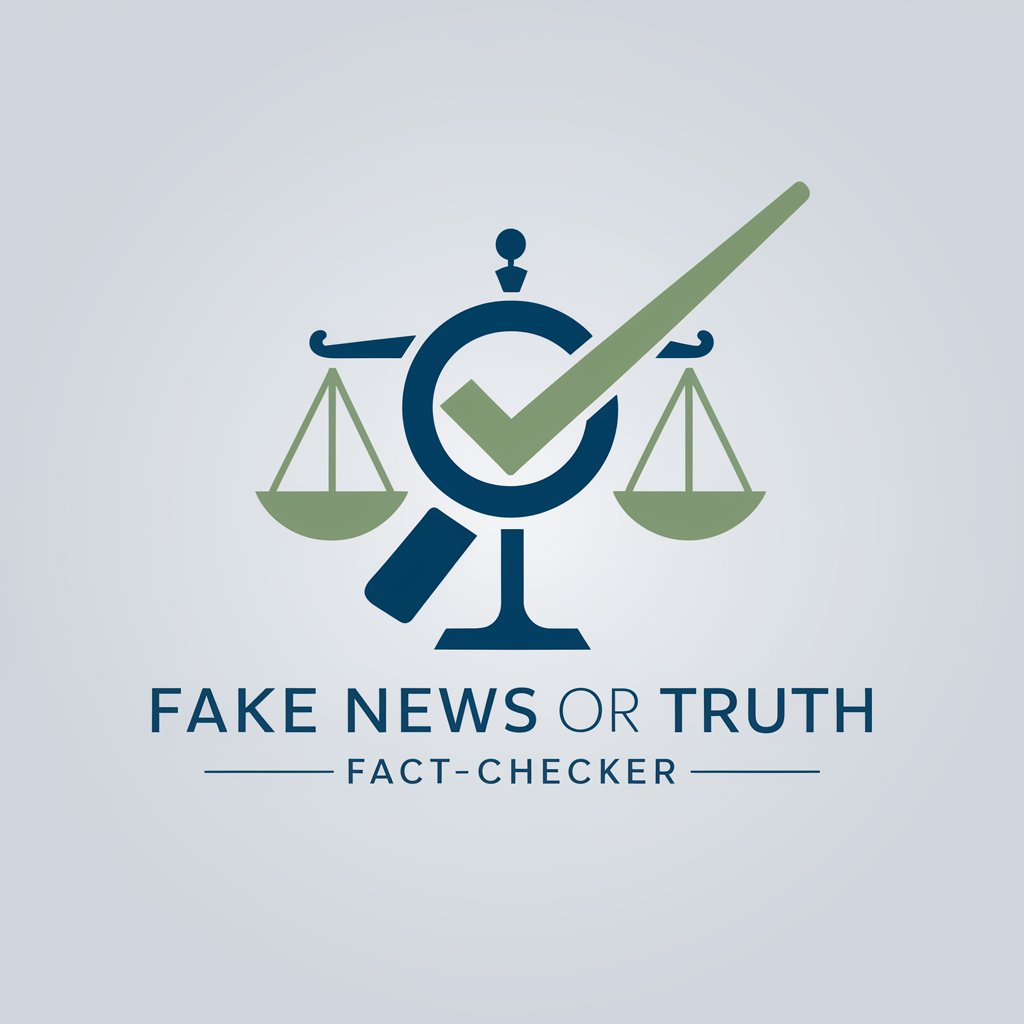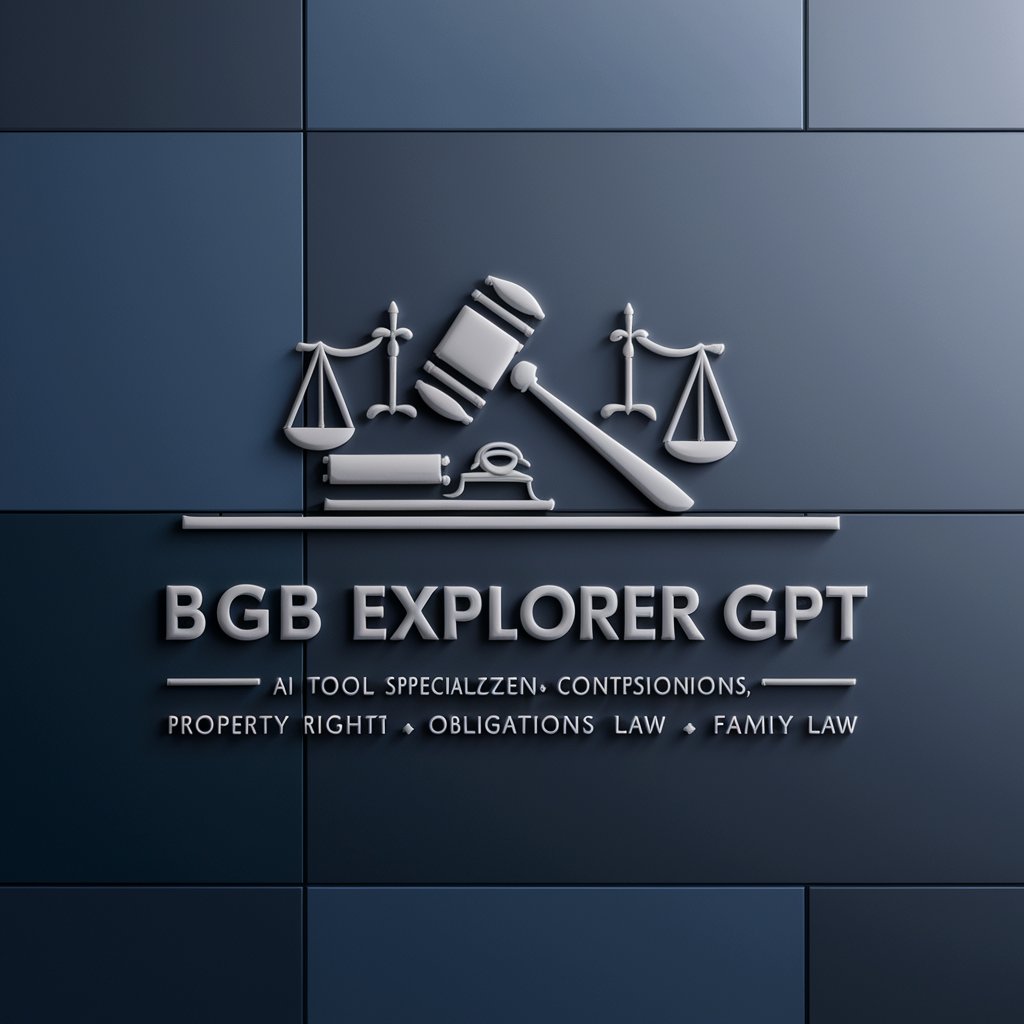Fake News or Truth | Fact-checker - AI-Powered Fact Checking

Welcome! Ready to uncover the truth?
Unveil the truth with AI insight.
Analyze the validity of the following claim:
Verify the accuracy of this news article:
Fact-check this statement:
Evaluate the truthfulness of this report:
Get Embed Code
Understanding Fake News or Truth | Fact-checker
Fake News or Truth | Fact-checker is designed to critically analyze news articles, statements, or any form of information presented to the public, aiming to discern their authenticity and factual accuracy. Its primary purpose is to mitigate the spread of misinformation by providing a systematic evaluation of the claims made within a piece of content. Using a combination of advanced web search, analysis of source reliability, and logical reasoning, it assesses each claim's validity, offering a rating on a scale from 0 (fake) to 10 (facts). For example, when presented with a news article claiming a new scientific discovery, this service would examine the evidence provided, cross-reference claims with reputable sources, and evaluate the logical consistency of the conclusions drawn. Powered by ChatGPT-4o。

Core Functions and Use Cases
Claim Verification
Example
Analyzing a viral claim about a political figure's statement.
Scenario
When a statement from a political figure goes viral, claiming a significant policy change, the service can verify the accuracy of this statement by checking against official sources, speeches, and credible news outlets, providing a rating that reflects its authenticity.
Source Evaluation
Example
Assessing the reliability of a study mentioned in health advice.
Scenario
In articles offering health advice based on a 'recent study', this service evaluates the study's credibility, its publication in peer-reviewed journals, and its interpretation by the article, ensuring the advice is scientifically sound.
Logical Consistency Check
Example
Examining the conclusions drawn from data in economic reports.
Scenario
For economic reports that draw bold conclusions from data, this tool assesses the logical flow and consistency of these conclusions with the presented data, ensuring they are reasonable and accurately represented.
Target User Groups
Educators and Students
These groups benefit from using the service to teach and learn critical thinking and media literacy skills, enabling them to discern credible information from misinformation.
Journalists and Researchers
Professionals in these fields use the service to quickly verify facts and sources, ensuring their work's integrity and accuracy.
General Public
Everyday users seeking to navigate the vast amounts of information online responsibly can use this service to confirm the reliability of news articles, social media posts, and other information sources they encounter.

How to Use Fake News or Truth | Fact-checker
1
Start by visiting yeschat.ai for a no-cost trial, accessible without signing in or requiring a ChatGPT Plus subscription.
2
Provide the text of the news article or claim you wish to verify. Ensure you include any specific statements or assertions for targeted analysis.
3
Specify any particular areas of the content you're most interested in verifying, such as statistical claims, historical facts, or scientific assertions.
4
Review the analysis provided, which includes verification of claims, source reliability assessments, and an overall truthfulness score.
5
Utilize the detailed findings to inform your understanding, guide your research, or support your argumentation in discussions or writings.
Try other advanced and practical GPTs
Book Writer AI Team
Bringing Your Stories to Life, AI-Powered

FITDRAW - Wellness and Fitness Illustration Maker
Visualize wellness with AI-powered illustrations

Career Navigator for International Students
Empowering international students with AI-driven career guidance.

Art Style Transformer
Bringing your images to life with AI artistry.

Your Local Synth Store Employee
Empowering music creation with AI-powered sound design.

Master Control Program
Revolutionize Your RPGs with AI Power

TravelSuite Itinerary Planner
AI-Powered Personal Travel Guide

Help Me Vote - 2024 US Presidential Election
Empowering voters with AI-driven insights

Examen de rattrapage
Crafting Customized Academic Assessments

INFOTECH QUIZ
Empowering tech learning with AI quizzes

Infrastructure as Code Advisor
Empowering infrastructure automation with AI

BGB Explorer GPT
Deciphering BGB Law with AI

Fake News or Truth | Fact-checker FAQs
What sources does Fake News or Truth | Fact-checker use for verification?
It utilizes a wide range of reliable sources, including peer-reviewed academic journals, reputable news outlets, and verified data from official organizations.
Can it analyze claims from any type of content?
Yes, it can analyze claims from news articles, blog posts, social media updates, and other text-based content, focusing on factual accuracy and logical consistency.
How accurate is the fact-checking process?
While highly accurate, users should consider it as part of a broader research effort, since the context and nuances of some claims may affect interpretation.
Does it provide sources for its findings?
Yes, it cites all sources used in the verification process, rating them for reliability, credibility, and independence.
How fast does it return results?
Results are typically generated in real-time, though complex analyses may take longer to ensure thorough verification.
